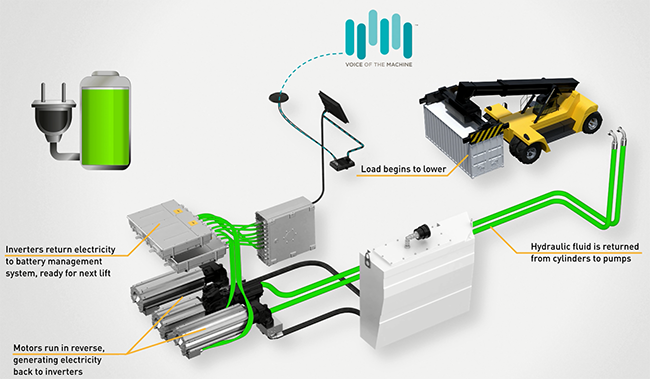Parker’s Vision: Electrification of Industrial Applications (Interview)
What is the main challenge for the electrification of a wide range of industrial applications? Parker is a significant partner for VARIODRIVE and shares our passion for motion control. Parker drives innovation in the electrification of various industrial markets, and in this article, we discuss what they consider as crucial challenges and opportunities in this field. Parker’s products play a substantial role in VARIODRIVE’s efforts in what we refer to as e-mobility, which involves developing or adapting innovative applications powered by electric motors.
“When I took responsibility for this market in 2012, many people told me that this technology would not have a future. Now, our technology is applied in a wide range of markets, and it’s something that everyone wants to be a part of.”
Bruno Jouffrey is the Market Manager for Mobile Activities in Europe, based in Dijon, and has been with Parker for 33 years. He started in production and progressed through the company in roles related to manufacturing, R&D, industrialization, and quality. Who could provide us with better insights into Parker’s electrification ambitions?

Improving the Operational Efficiency of Electric Motors
In 2011, Parker US supplied a racing team with kit motors for their electric motorcycle. These kit motors were initially developed for industrial applications and enabled the team to achieve good results. However, during some races, the kits weren’t efficient enough for the motorcycle to complete the race, given the electric power with which they were allowed to start. Parker took on the challenge of providing the team with a more powerful and efficient motor.
“Parker Dijon focuses on research, development, and subsequent production of industrial products. Their expertise in motor development made them ideal for creating a new electric motor. For the motorcycle, the major challenge was to deliver more power while being more efficient, enabling the team to go further with the same energy storage system. The team also designed the necessary mechanical interface to provide the required full functionality. The project turned out to be a great success.
Moreover, the team soon discovered that the GVM motor design is also highly suitable for a wide range of industrial applications. Thanks to the combination of high torque and efficiency, the motor can, for example, drive the hydraulic pumps of various construction vehicles. This enables these companies to replace traditionally used diesel engines with electric motors, reducing their carbon footprint and noise production.”

Electro-Hydraulic Pump System
The Electro-Hydraulic Pump System (EHPS) by Parker is one of the prominent solutions for a so-called decoupled approach. By decoupling the traction and the work function, the internal combustion engine no longer needs to be sized for peak energy demand, enabling the use of smaller, fuel-efficient combustion engines. The work function is then driven by an electric motor.

Improvement of the operational efficiency of electric motors
In 2011, Parker provided a race team with kit motors for their electric motorcycle. These kit motors were developed for industrial applications and enabled the team to achieve good results. However, in some races, the kits were not efficient enough for the motorcycle to complete the race given the electric power with which they were allowed to start the race. Parker took on the challenge to provide the team with a more powerful and efficient motor.
“Parker Dijon focuses on research, development, and subsequent production of industrial products. Their experience in motor development made them ideal for the creation of a new electric motor. For the motorcycle, the major challenge was to deliver more power while being more efficient, allowing the team to travel further with the same energy storage system. The team also designed the necessary mechanical interface to provide full functionality. The project was a great success.
And the team quickly discovered that the GVM motor design is also well-suited for a wide range of industrial applications. Due to the combination of high torque and high efficiency, the motor, for instance, can drive the hydraulic pumps of various construction vehicles. This enables these companies to replace traditionally used diesel engines with electric motors, reducing their carbon footprint and noise production.”
